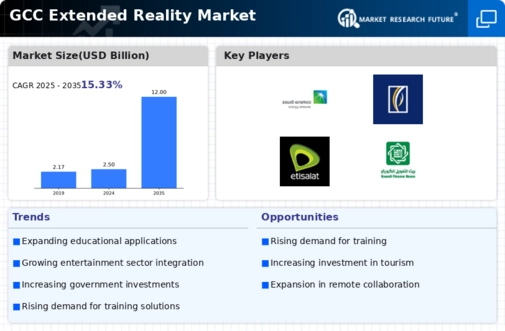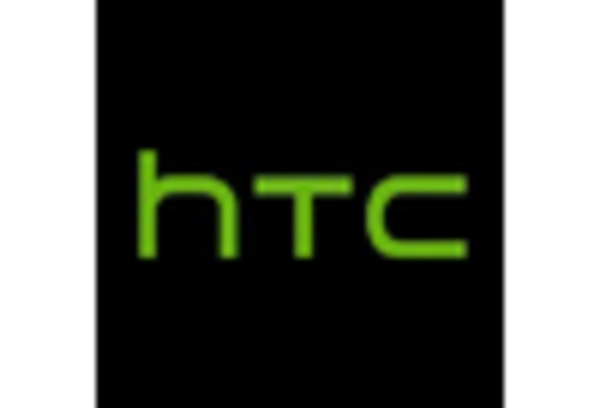The extended reality market is currently characterized by a dynamic competitive landscape, driven by rapid technological advancements and increasing consumer demand for immersive experiences. Key players such as Meta Platforms (US), Microsoft (US), and Apple (US) are at the forefront, each adopting distinct strategies to enhance their market positioning. Meta Platforms (US) continues to focus on innovation in social virtual reality, while Microsoft (US) emphasizes enterprise solutions through its mixed reality offerings. Apple (US), on the other hand, is leveraging its ecosystem to integrate augmented reality into its devices, thereby enhancing user engagement. Collectively, these strategies contribute to a competitive environment that is increasingly focused on user experience and technological integration.
In terms of business tactics, companies are localizing manufacturing and optimizing supply chains to enhance efficiency and reduce costs. The market structure appears moderately fragmented, with several players vying for dominance. However, the influence of major companies is substantial, as they set trends and standards that smaller firms often follow. This competitive structure fosters innovation, as companies strive to differentiate themselves through unique offerings and technological advancements.
In October 2025, Meta Platforms (US) announced a partnership with a leading gaming studio to develop exclusive virtual reality content. This strategic move is likely to enhance Meta's content library, attracting more users to its platforms and solidifying its position in the gaming sector. The partnership underscores the importance of content in driving user engagement and retention in the extended reality space.
In September 2025, Microsoft (US) unveiled a new mixed reality headset aimed at enterprise users, featuring advanced AI capabilities. This launch is significant as it positions Microsoft to capture a larger share of the enterprise market, where demand for immersive training and collaboration tools is on the rise. By integrating AI, Microsoft enhances the functionality of its devices, making them more appealing to businesses seeking innovative solutions.
In August 2025, Apple (US) revealed plans to expand its augmented reality features across its product line, including iPhones and iPads. This initiative is crucial as it aims to create a seamless user experience across devices, potentially increasing customer loyalty and driving sales. By embedding augmented reality into its existing ecosystem, Apple is likely to strengthen its competitive edge in the market.
As of November 2025, current trends in the extended reality market include a strong emphasis on digitalization, sustainability, and AI integration. Strategic alliances are increasingly shaping the competitive landscape, as companies recognize the value of collaboration in driving innovation. Looking ahead, competitive differentiation is expected to evolve, with a shift from price-based competition to a focus on innovation, technology, and supply chain reliability. This transition suggests that companies will need to invest in research and development to stay ahead in a rapidly changing market.

















Leave a Comment